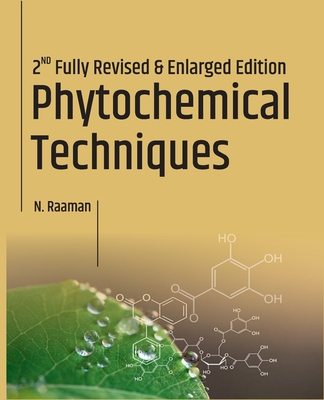Phytochemical Techniques (2nd Revised And Enlarged Edition)

Phytochemical Techniques (2nd Revised And Enlarged Edition)
Phytochemicals are the individual chemicals from which the plants are made and plants are the key sources of raw materials for both pharmaceutical and aromatic industries. The improved methods for higher yield of active compounds will be the major incentive in these industries. To help those who involved in the isolation of compounds from plants, some of the essential phytochemical techniques are included in this book. It contains 10 chapters. A brief introduction is given in Chapter 1. Chapter 2 deals with the production processes for herbals and botanicals. Selection of plant and plant parts for phytochemical analysis are included in Chapter 3. Different methods of extraction are given in Chapter 4. Qualitative phytochemical screening is presented in Chapter 5. Various methods for separation of phytochemicals, which include paper and thin layer chromatography and column chromatography are given in Chapter 6. Qualitative and quantitative estimation of phytochemicals using gas chromatography, high performance liquid chromatography and high performance thin layer chromatography are described in Chapter 7. The various methods of identification including the physical characteristics and spectroscopy are included in Chapter 8. The ultraviolet spectroscopy, infrared spectroscopy, near infrared spectroscopy, mass spectroscopy, nuclear magnetic resonance spectroscopy and crystallography are included in this chapter. The categories of phytochemicals are given in Chapter 9. A case study of isolation and identification of compounds in the laboratory of the author of this book is included in Chapter 10. Isolation of alkaloids is given in Chapter 11. Extraction and isolation of phenolic compounds is described in Chapter 12. Isolation of anthocyanin compounds is included in Chapter 13. Extraction and analysis of essential oils are described in Chapter 14. The theoretical principles involved in the instruments, handling of samples and interpretation of spectra are given in detail. More than 160 figures (27 in colour) are included to illustrate the various techniques and the structures of compounds. Apart from the references, indexes of common and scientific names of plants and chemical names and subject index are included.
PRP: 518.40 Lei
Acesta este Prețul Recomandat de Producător. Prețul de vânzare al produsului este afișat mai jos.
414.72Lei
414.72Lei
518.40 LeiLivrare in 2-4 saptamani
Descrierea produsului
Phytochemicals are the individual chemicals from which the plants are made and plants are the key sources of raw materials for both pharmaceutical and aromatic industries. The improved methods for higher yield of active compounds will be the major incentive in these industries. To help those who involved in the isolation of compounds from plants, some of the essential phytochemical techniques are included in this book. It contains 10 chapters. A brief introduction is given in Chapter 1. Chapter 2 deals with the production processes for herbals and botanicals. Selection of plant and plant parts for phytochemical analysis are included in Chapter 3. Different methods of extraction are given in Chapter 4. Qualitative phytochemical screening is presented in Chapter 5. Various methods for separation of phytochemicals, which include paper and thin layer chromatography and column chromatography are given in Chapter 6. Qualitative and quantitative estimation of phytochemicals using gas chromatography, high performance liquid chromatography and high performance thin layer chromatography are described in Chapter 7. The various methods of identification including the physical characteristics and spectroscopy are included in Chapter 8. The ultraviolet spectroscopy, infrared spectroscopy, near infrared spectroscopy, mass spectroscopy, nuclear magnetic resonance spectroscopy and crystallography are included in this chapter. The categories of phytochemicals are given in Chapter 9. A case study of isolation and identification of compounds in the laboratory of the author of this book is included in Chapter 10. Isolation of alkaloids is given in Chapter 11. Extraction and isolation of phenolic compounds is described in Chapter 12. Isolation of anthocyanin compounds is included in Chapter 13. Extraction and analysis of essential oils are described in Chapter 14. The theoretical principles involved in the instruments, handling of samples and interpretation of spectra are given in detail. More than 160 figures (27 in colour) are included to illustrate the various techniques and the structures of compounds. Apart from the references, indexes of common and scientific names of plants and chemical names and subject index are included.
Detaliile produsului









